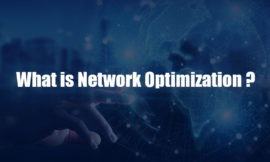Blueprint Revisions
In today’s day and age, things are moving at a rapid pace, especially in the field of technology. Cisco is introducing a brand-new agile process called Minor Revisions to keep up with these fast-changing technologies. It will be able to align its exams with these modifications significantly faster thanks to minor revisions.
Minor Revisions will give Cisco the speed and agility it needs to modify its programs in order to meet the technological advancements and market shifts.
They can achieve this by enabling it to update all the track-related information such as the equipment list, software, and exam blueprint, more frequently while ensuring minimal total changes (less than 20%). By doing this, it will be able to ensure their content relevancy and reduce learning curves in between changes.
The objectives of the minor revision are highlighted below:
- Expand the exam blueprint by making sure the exam objectives are clear.
- Add new blueprint tasks to assure exam relevancy as of today.
- Discontinue outdated products and/or technological advancements that are no longer relevant.
- Update equipment and/or software.
Cisco has very recently updated the CCIE Collaboration Exam.
CCIE Collaboration Lab Exam, minor revision 3.1
The CCIE Collaboration Lab Exam will be updated through a minor revision (small and incremental changes). Although the exam blueprint of the overall domains might seem familiar at first sight, it both added and removed technology solutions with this minor revision to establish the exam’s relevancy.
Kindly visit www.cisco.com/go/CertRoadmap for further information on the CCIE Collaboration certification program as well as a list of exam topics covered in the updated CCIE Collaboration lab exam.
Candidates must be prepared to be tested on the updated exam material for CCIE Collaboration starting July 20, 2023.
CCIE Collaboration Lab Exam Revision 3.1
CCIE Collaboration Lab Exam (v3.1) – Executive Summary
Cisco is able to closely align the topics and domains with the current Cisco Collaboration solutions and technologies due to the new minor revision for the CCIE Collaboration. Companies in today’s modern enterprise intend to use the cloud to deliver scalability, flexibility, and real-time integrations to meet their business objectives and collaboration requirements.
Topics like Webex calling and meetings are introduced in the v3.1 lab exam blueprint for hybrid and cloud collaboration. Also, there is a strong emphasis on security, which remains a primary priority for Cisco’s on-premises and cloud collaboration solutions. Many outdated topics from the v3.1 blueprint have been removed, including JTAPI, ISDN, and MGCP.
Note: Below is a detailed summary of the CCIE Collaboration v3.1 lab exam blueprint.
CCIE Collaboration Lab Exam Revision 3.1
Exam Topics Changes Highlights: (Please note that this list is not all-inclusive and that these are merely highlights; for more information, see the official Exam Topics list.)
Hardware and Software equipment
To complement the new CCIE Collaboration revision 3.1 in the lab exam environment, improvements were made to the equipment and software releases used.
The following Cisco equipment and software releases are suggested for usage by any candidates wishing to study for the exam. For a detailed description, go to the CCIE Collaboration Lab Exam Equipment and Software v3.1 <link to new page>
Exam format:
The format of the lab exam has not been changed in this minor revision. Examine the format of the CCIE Collaboration Lab. For more details on the lab exam format, click <link to new page>
CCIE Collaboration Lab Exam Revision
Exam Topics Changes Highlights: (Please note these are highlights only therefore are not all inclusive, refer to the actual Exam Topics list for details)
| V3.0 | V3.1 |
| 1. Protocols and APIs (10%) | 1. Protocols and APIs (10%) |
| 1.1. IP collaboration signaling protocols 1.1.a. SIP 1.1.b. MGCP 1.7. Messaging protocols 1.7.a. XMPP 1.7.b. SIP/SIMPLE | 1.1 SIP signaling protocol 1.1.a SIP Theory (Request and Respond) 1.1.b Identity headers (Name, number, URI, Privacy) 1.1.c Route headers 1.1.d Diversion headers 1.1.e CallID, SessionID, and CiscoGUID 1.7 Security protocols 1.7.a TLS negotiation 1.7.b TLS certificate verification |
| 2. Infrastructure and Quality of Services (10%) | 2. Infrastructure and Quality of Services (10%) |
| 2.4 Troubleshoot voice and video quality issues 2.4.a Media stream packet loss, jitter, and latency 2.4.b Endpoint media quality metrics 2.4.c One-way or no-way media 2.6 Certificate management 2.6.a CUBE 2.6.b UCM and IM&P 2.6.c Cisco Expressway Series 2.6.d Cisco Meeting Server | 2.4 Troubleshoot voice and video quality issues 2.4.a Media stream packet loss, jitter, and latency 2.4.b Endpoint media quality metrics 2.4.c One-way or no-way media 2.4.d Media quality troubleshooting tools in Webex Control Hub 2.6 Certificate management 2.6.a Premise based PSTN gateway 2.6.b UCM, IM&P, Cloud Connected UC 2.6.c Cisco Expressway Series |
| 3. Call Control and Dial plan (20%) | 3. Call Control and Dial plan (20%) |
| 3.3 Advanced dial plan features on Unified CM 3.3.a Global dial plan replication 3.3.b Local route groups 3.3.c Emergency Location Groups | 3.3 Dial plan features on Webex Calling 3.3.a Location and numbers, Routing prefix 3.3.b Interworking dial plan, route list, route groups, trunks, call typing, unknown extension dialing 3.3.c Outgoing and incoming permissions |
| 3.12 SIP-SRST and E-SRST | 3.3.d Transfer and forwarding restrictions 3.6 Telephony features on Webex Calling 3.6.a Call Park 3.6.b Auto attendant 3.6.c Call queuing and hunting 3.6.d Receptionist and paging 3.6.e Single Number Reach 3.6.f Voicemail 3.11 Survivability Features 3.11.a SIP-SRST 3.11.b Webex Calling Survivability Gateway |
| 4. Endpoint and User Management (10%) | 4. Endpoint and User Management (10%) |
| 4.3 Securing endpoints 4.7 Self-provisioning | 4.3 Securing endpoints 4.3.a SIP OAuth 4.3.b CAPF and LSC 4.6 Cloud clients 4.6.a Privacy features 4.6.b Analytics and troubleshooting 4.6.c Proximity 4.6.d Security and compliance |
| 5. Edge Services (20%) | 5. Edge Services (20%) |
| 5.1 ISDN PRI gateways 5.11 Webex Edge and Webex Hybrid Services 5.11.a Extending cloud services using on premise resources 5.11.b Cloud service management | 5.2 Multi-tenancy on Cisco Unified Border Element (CUBE) 5.11 Cloud-based PSTN for Webex Calling 5.11.a Cloud Connected PSTN Provider 5.11.b Cisco Calling Plan 5.12 Premises-based PSTN for Webex Calling 5.12.a Registration-based Local Gateway 5.12.b Certificate-based Local Gateway 5.13 Edge Audio for Webex |
| 6. Media Resources and Meetings (15%) | 6. Media Resources and Meetings (15%) |
| 6.2 Rendezvous conferencing 6.2.a Unified CM Conference Now 6.2.b Cisco Meeting Server Spaces 6.4 Scheduled meetings 6.4.a On-premise 6.4.b Cloud 6.5 CallBridge and WebBridge on Cisco Meeting Server 6.5.a Internal user access 6.5.b External user access 6.6 High availability on Cisco Meeting Server 6.7 Secure conferencing on Cisco Meeting Server | 6.3 Webex meetings 6.3.a Meeting scheduling 6.3.b Webex meeting Features 6.4 Media quality troubleshooting 6.5 Meeting Security 6.5.a Planning a secured meeting 6.5.b End-to-end encryption plus identity 6.5.c Personal meeting room security 6.5.d Participant roles 6.6 Video Mesh |
| 7. Collaboration Applications and Services (15%) | 7. Collaboration Applications and Services (15%) |
| 7.2 Presence 7.2.a Busy Lamp Field (BLF) 7.2.b Soft client 7.3 IM&P server integration with external database for Persistent Chat and Group Chat 7.11 Cisco Unified Contact Center Express (UCCX) 7.11.a Integration 7.11.b Scripting 7.12 Contact Center agent desktop (Finesse) | 7.5 Webex Contact Center 7.6 Webex Bot (Implement from a provided Python code skeleton) |
CCIE Collaboration Lab Exam Revision
In support of the updated CCIE Collaboration revision 3.1 the lab exam environment, changes were made to both the equipment and software releases used. Candidates who want to prepare for the exam are now advised to use the following Cisco equipment and Software releases. Visit CCIE Collaboration Lab Exam Equipment and Software v3.1 <link to new page> for a complete overview.
| V3.0 | V3.1 |
| 1. Core Collaboration Applications | 1. Core Collaboration Applications |
| • Cisco Unified Communications Manager 12.5 • Cisco Unified IM & Presence 12.5 • Cisco Unity Connection 12.5 • Cisco Meeting Server 2.5** • Cisco Meeting Management 2.5** • Cisco Unified Contact Center Express 12.0 | • Cisco Unified Communications Manager 14.0 • Cisco Unified IM & Presence 14.0 • Cisco Unity Connection 14.0 • Webex Control Hub |
| 2. Collaboration Edge | 2. Collaboration Edge |
| • Cisco Expressway Series 12.5 • CSR1000v: IOS XE 16.6 | • Cisco Expressway Series 14.2 • Cisco Catalyst 8000V: IOS XE 17.6 |
| 3. Client PCs and Applications | 3. Client PCs and Applications |
| • Active Directory: Windows Server 2016 • Test PC: Windows 10 • Cisco Jabber for Windows 12.5 | • Active Directory: Windows Server 2016 • Test PC: Windows 10 • Cisco Jabber for Windows 14.1 • Webex App |
Exam format
No changes have been made to the lab exam format in this minor revision. Visit CCIE Collaboration Lab Exam format. <link to new page> for more information about the lab exam format.



